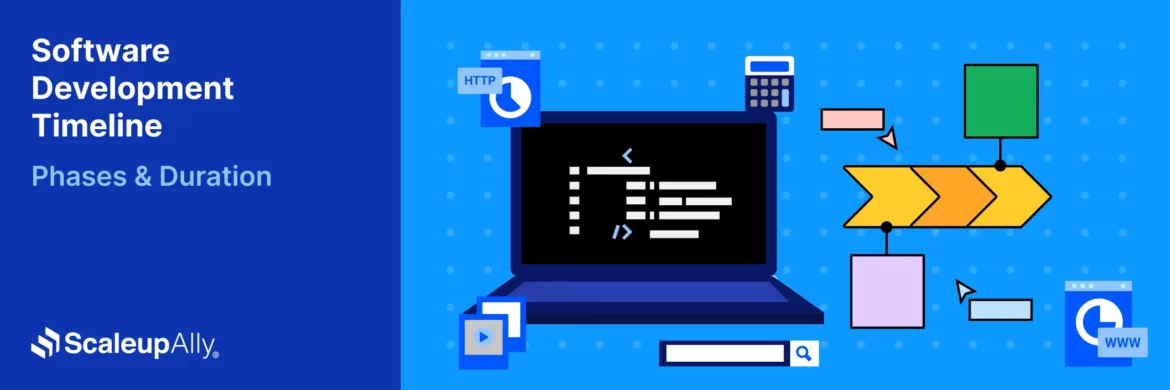
11 Best Power Apps Templates for Your Business
Suprabhat Sen | April 1, 2025 , 15 min read
Table Of Content
Nobody wakes up excited about spreadsheets, drowning in approval emails or chasing down missing data. Yet, these time-consuming tasks are the reason why businesses lose hours each day when they could be completed in minutes with the right tool.
That tool could be Power Apps and its Templates. Power Apps templates are pre-built solutions designed to bring order to your chaos and convert it into something meaningful you would appreciate. They’re not flashy and may not win design awards, but they eliminate tedious manual tasks and make your team more productive.
With so many Power Apps templates available, many businesses either use the wrong ones or worse, ignore them entirely.
In this blog, we’ll highlight some of the best Power Apps templates that will help your business run more efficiently. We’ll also explore their benefits and how you can customize them to fit your specific needs.
Key Takeaways
- Use Power Apps templates and skip months of development with ready-to-use templates for inspections, approvals, inventory, and more.
- You can easily customize each template by tweaking it to suit your brand, making changes to fields, and automating workflows, all without coding.
- Power Apps templates can work with your existing tools like Microsoft 365, Dynamics 365, or SharePoint for seamless data flow. All you need to do is connect them.
- Pilot with real users, gather feedback, and train teams for smooth adoption before deploying.
- You need to keep improving the app by monitoring usage, fixing issues, and updating features to keep the app effective.
Power Apps Templates for Business
Why build from scratch when Power Apps templates exist? These ready-made solutions cut development time and solve real business headaches fast. Below are 11 PowerApps design templates that can help you quickly build visually appealing and functional applications with ease.
1. Inspection App
For field teams so involved in paperwork, this template makes everything a lot easier. For example, a quality control staff can conduct inspections with just their smartphones. All they have to do is take photos of defects, log issues with timestamps, and submit reports with a single tap.
The app syncs with SharePoint or Dataverse, which eliminates the risk of lost paperwork or issues with version control. Managers get real-time dashboards showing inspection trends, recurring problems, and compliance status.
For industries like construction or manufacturing, where safety and quality are non-negotiable, this template cuts reporting time significantly. Customizable dropdowns and conditional logic ensure the app adapts to your specific checklist requirements, all without having to code this app or template.
2. Employee Onboarding Portal
If you are familiar with HR teams, you will notice they waste countless hours chasing signatures, setting up accounts, and answering the same new-hire questions. The employee onboarding template automates the entire process by ensuring that new employees get a personalized portal where they e-sign documents, complete training modules, and request equipment before Day One.
IT receives automated tickets for system access, and managers get notified when their team members are ready to roll. The template integrates with Azure AD for seamless account provisioning and can even include a company wiki or FAQ section.
According to a case study by Beecker, automated onboarding reduced time-to-productivity by 68%.
3. Inventory Tracker
Stockouts and overstocking cost businesses billions annually. An inventory tracker template turns any smartphone into a barcode scanner, letting warehouse staff update inventory levels in real time. Set low-stock alerts that trigger purchase orders, or integrate with Dynamics 365 for end-to-end supply chain visibility.
The app works offline, which is a very critical feature for remote warehouses, and syncs data when connectivity resumes. For retail businesses, it can even track shelf locations or expiry dates.
4. Service Request Manager
IT and facilities teams receive daily vague emails like “the printer’s broken.” This template replaces these chaotic emails (complaints) with a structured intake form where users can select categories (e.g., “Hardware,” “Software”), priority levels, and even attach screenshots. Then, tickets auto-route to the right team, with SLA countdowns to prevent delays.
Integrations with Teams allow technicians to chat with requesters without leaving the app. Customize it for any department (HR for employee queries, maintenance for repair requests) and watch how productive your team becomes.
5. Budget Approval Workflow
Finance teams lose sleep over unauthorized spending. This template enforces rules: employees submit requests with vendor quotes, budgets auto-check against available funds, and approvers get mobile notifications to approve or reject with comments. Denials include clear reasons, reducing repeat requests.
Audit trails satisfy compliance teams, and integrations with ERP systems like SAP ensure seamless posting. It is found that automated approval workflows cut processing costs by 60%. This means finance teams no longer need to chase down execs for signatures.
6. Customer Feedback Collector
This template lets businesses embed feedback forms into their websites or apps, with conditional questions (e.g., “If rating ≤3, ask for details”). The responses then pipe into Power BI for sentiment analysis, revealing trends like rising complaints about shipping delays. For retail, add a feature for photo uploads (e.g., “Upload a photo of your damaged product”).
7. Meeting Room Booker
This template displays real-time availability, lets employees book spaces with one click, and auto-sends Outlook invites. Sensors (via IoT integration) can even detect no-shows and release rooms. Conflict resolution is built-in: if two teams claim the same slot, the system suggests alternatives based on attendee count or amenities.
8. Safety Incident Reporter
In high-risk industries, delayed incident reporting costs lives. This mobile-friendly template lets workers log accidents or near-misses with geotags, photos, and witness statements. Supervisors get instant alerts for urgent issues, and analytics identify hazard hotspots. OSHA compliance becomes effortless. All records are timestamped and stored securely. Safety shouldn’t rely on paper trails.
9. Travel Expense Submission
Receipts get lost, and reimbursement delays frustrate employees. This template simplifies the process: snap a photo of a receipt, and AI extracts the amount, date, and vendor. The app auto-calculates totals per policy (e.g., “Meals capped at $25/day”) and routes submissions for approval. Integrations with QuickBooks or SAP post approved expenses directly. Wise estimates that automation cuts expense report errors significantly.
10. Lead Capture App
Sales teams at trade shows waste half their time manually entering business cards into CRMs. This template lets reps scan cards (using AI-powered OCR) or input details manually, enriching leads with LinkedIn data (via Power Automate). Leads sync to Dynamics 365 or Salesforce instantly. Prompt follow-ups increase conversion rates.
11. Asset Maintenance Log
Unplanned equipment downtime costs manufacturers $50 billion yearly (Forbes). This template schedules maintenance, logs repairs, and tracks part lifespans. IoT integrations can pull real-time machine data to predict failures before they happen. Technicians access manuals or schematics in the app, reducing diagnostic time. Customizable checklists ensure compliance with industry standards.
Benefits of Using These Power Apps Templates for Businesses
You could either choose to build apps from scratch or you could leverage existing Microsoft Power Apps templates to skip months of development. These ready-made templates deliver serious advantages. Here’s what your business stands to gain.
1. Slash Development Time from Months to Days
Building enterprise-grade apps traditionally takes weeks (or months) of coding, testing, and debugging. With Microsoft Power Apps templates, you get pre-built functionality that works right out of the box. Do you need an inspection app? There’s a template for that. A service request system? Done. Even if you tweak them, you’re starting at 80% completion rather than zero.
Gartner reports that low-code tools reduce app development time by up to 70%. That means faster deployment, quicker ROI, and less drain on your IT team.
2. Eliminate Costly Coding
Hiring developers is expensive, especially for niche business apps. But Power Apps templates free you from dependency on specialized coders. The drag-and-drop interface lets non-technical employees customize workflows, forms, and logic without writing a single line of code.
Finance teams can modify budget approval steps; HR can tweak onboarding checklists. According to Microsoft, businesses using Power Apps reduce external development costs by an average of 53%. That’s budget you can redirect to growth instead of IT overhead.
3. Reduce Human Error with Structured Processes
Manual data entry is a minefield of mistakes. A typo in inventory numbers or a misplaced service ticket can snowball into major issues. Microsoft Power Apps enforces consistency: dropdown menus, mandatory fields, and automated validation rules prevent slip-ups.
For example, the inventory tracker template requires barcode scans instead of handwritten logs, cutting errors. Fewer mistakes mean fewer operational headaches and more trust in your data.
4. Scale Effortlessly as Your Business Grows
Startups and enterprises alike struggle with scaling processes. A spreadsheet that works for 10 employees collapses under 100. Power Apps templates free you from these limitations. They’re designed to handle increasing users, data volume, and complexity without performance drops.
Cloud-based storage (SharePoint, Dataverse) ensures access across locations. Need to add a new department to your onboarding app? Just duplicate and modify the workflow.
5. Boost Compliance with Built-In Audit Trails
Industries like healthcare, finance, and manufacturing face strict regulations. Microsoft Power Apps templates automatically log user actions, timestamps, and approval chains, which are critical for audits.
The budget approval template, for instance, records every comment and decision, while the safety incident app maintains OSHA-compliant records. Stay audit-ready without extra paperwork.
6. Empower Remote and Field Teams
Templates like the inspection app or asset maintenance log work offline, syncing data when connectivity returns. Field technicians can log repairs from a plant floor; sales reps can capture leads at a conference without Wi-Fi.
With Power Apps templates free of location constraints, your team can stay productive anywhere.
7. Improve Decision-Making with Real-Time Data
Waiting for end-of-month reports means acting on stale insights. Microsoft Power Apps templates feed live data into Power BI dashboards: inventory levels, service ticket backlogs, or customer feedback trends.
For example, the lead capture app shows which trade shows generate the hottest prospects. According to MIT, companies using real-time analytics make decisions 5x faster.
8. Enhance Customer and Employee Experience
Frustrated employees and customers bleed revenue. Slow onboarding, delayed service tickets, or clunky feedback systems drive people away.These templates streamline interactions: employees get intuitive tools, and customers enjoy quick resolutions.
Happy teams + happy customers = a healthier bottom line.
How to Customize Power Apps Templates for Your Business
Power Apps templates give you a solid foundation, but you can customize them according to your business’s unique needs. Here’s how to do that.
1. Start with the Right Template
Don’t just grab the first template you see. Match it to your specific pain point. Need to streamline approvals? The Budget Approval Workflow template is your starting point. Managing inventory? The Inventory Tracker has your back. Microsoft’s template gallery lets you filter by industry and function. Use it. Even if a template isn’t a 100% fit, it’s easier to tweak an existing app than to build from zero.
2. Brand It
Templates come with generic colors and logos. Swap them for your brand’s look. In Power Apps Studio:
- Go to Theme to update colors, fonts, and button styles.
- Upload your logo under Media.
- Adjust the home screen layout to mirror your company’s vibe.
Don’t let your app feel like a third-party tool. Brand it.
3. Add (or Remove) Fields
Templates include default fields, but your business isn’t default. Need to track contract expiry dates in your Service Request Manager? Add a date field. Don’t care about “Department” in your Lead Capture App? Delete it. Right-click any form in Power Apps Studio to:
- Add dropdowns, checkboxes, or file upload options.
- Set mandatory fields (like requiring a photo for incident reports).
- Rearrange fields to match your team’s workflow.
4. Automate the Boring Stuff with Power Automate
Templates handle basics. Improve them with workflows. Examples:
- Connect your Travel Expense Submission template to auto-email approvers when submissions hit $1K+.
- Link your Employee Onboarding Portal to Azure AD to auto-create email accounts.
- Set your Inventory Tracker to text your warehouse manager when stock dips below safety levels.
Microsoft reports that businesses using Power Automate with Power Apps save 8+ hours per week per employee.
5. Integrate with What You Already Use
Templates work alone, but they work better with your existing tools. Hook them up to:
- Microsoft 365 (Outlook, Teams) for approvals/notifications.
- Dynamics 365 or Salesforce to push leads or service tickets.
- SQL or SharePoint to pull live data into your app.
Go to Connectors in Power Apps Studio to link systems in minutes.
6. Test with Real Users Before Launch
Your finance team might dislike the dropdowns you added to the Budget Approval app. Avoid revolt by:
- Running a pilot with 5-10 power users.
- Watching them use the app (look for frustrated clicks!).
- Using their feedback to tweak navigation or fields.
7. Train Users
Even the slickest app fails if no one uses it. Skip the 50-page manual:
- Record a 2-minute Loom video walking through key features.
- Embed tooltips in the app (e.g., hover over “Submit” to see: “This alerts your manager”).
- Host a 15-minute “lunch and learn” demo.
Tip: Update your template’s Help screen with FAQs specific to your company.
8. Monitor and Make Changes
Launch day isn’t the finish line. Track:
- Usage stats (Are people abandoning forms halfway?).
- Error reports (Is the app crashing on iPhones?).
- Feedback (Add a “Suggest a Feature” button).
Then, tweak monthly. The Meeting Room Booker template might need a “Recurring Booking” option you hadn’t considered.
Conclusion
We don’t think anyone got into business to drown in paperwork, chase approvals, or manually count inventory. The whole point of technology is to remove these speed bumps, not digitize the frustration.
These Power Apps templates will start scaling results in your team. Just pick one to try first. (Hint: Start with whatever makes your team groan loudest. It could be inventory, onboarding, or expense reports.)
Your move. Deploy a template this week, or keep doing things the hard way. No judgment, but your future self knows which choice they’d thank you for.
And if you need expert guidance, a Power Apps development company can help you get started the right way.
Frequently Asked Questions
Q. What are Power Apps templates used for?
Power Apps templates provide ready-made solutions for common business needs like inspections, approvals, and inventory tracking, saving development time while streamlining workflows.
Q. Are Power Apps templates free?
Yes, Microsoft offers free Power Apps templates, though some premium features or integrations may require licensing.
Q. How do I customize a Power Apps template?
You can customize templates in Power Apps Studio by adjusting fields, branding, and workflows without coding using drag-and-drop tools.
Q. Where can I find the best Power Apps templates?
You can access templates directly in Power Apps (under “Create” → “Start from template”) or explore Microsoft’s industry-specific template gallery.
Related Blogs

Software Development Timeline: Phases, Duration & Estimation Guide
Understand the software development timeline with phase durations, key factors, hidden delays, and practical methods to estimate project time.
Suprabhat Sen
Nov 29 ,
16 min read

Software Development Cost Estimation Guide: What’s Included & What Affects the Price
Explore software development cost components, major pricing factors, and practical estimation methods to plan your project accurately from start to finish.
Suprabhat Sen
Nov 29 ,
14 min read

Calculating ROI for Software Development: A Detailed Guide
Discover proven strategies and practical tips to enhance the ROI for software development projects. Learn how to measure success and increase profitability.
Manu Jain
Nov 25 ,
19 min read



